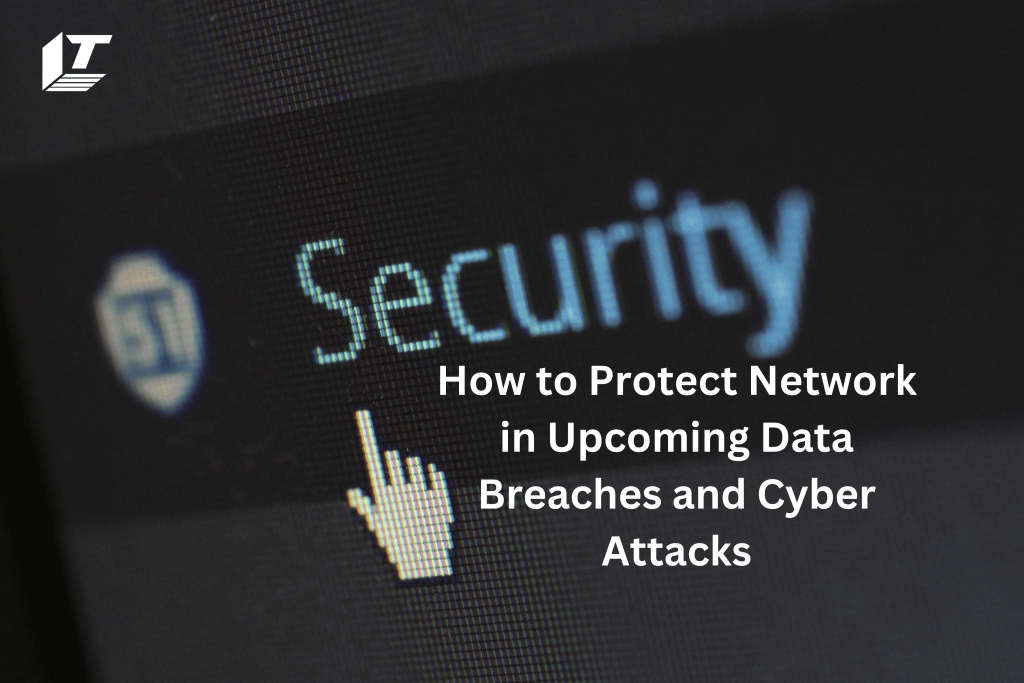In today’s digital environment, cyberattacks are growing more common and sophisticated, putting every firm at risk. Cybercriminals constantly improve their methods to exploit network security flaws, making the digital frontier dangerous.
The hazards are more than ever since a single data breach may inflict massive financial losses, image damage, and compromised personal and company data. It would help if you protected your network proactively to avoid these assaults.
This article discusses the essential strategies you need to defend your digital infrastructure against cyberattacks and data breaches in a continuously evolving threat environment.
The Growing Threat of Cyber Attacks
In this day and age of digital technology, cyberattacks are becoming more tricky, and they are targeting both individuals and businesses. A recent set of statistics indicates that by the year 2025, the annual cost of hacking will exceed $10.5 trillion all across the globe.
Given that it cost $3 trillion in 2015, this represents a significant increase. Because of the increasing frequency and severity of data breaches, it is no longer a question of whether someone will attempt to get into your network; in fact, it is a question of when they will do this?
To ensure that your operations continue to run smoothly and to safeguard confidential information, you need to be aware of how to protect your network from the threats that are currently present.
Understanding the Anatomy of a Cyberattack
Understanding cyberattack components is key to network security. Attacks often include recon, target operations, delivery, exploitation, installation, and command and control.
Knowing these stages lets you create defenses at each stage and halt an attack before it escalates. Hackers may get network data during reconnaissance. Public information restrictions lessen breach risk.
Strengthening Your Network’s Perimeter
When it comes to countering any possible cyberattacks, the perimeter of your network is the first line of defense. Tools like firewalls, intrusion detection systems (IDS), and intrusion prevention systems (IPS) are essential when it comes to the monitoring and management of traffic coming into and going out of a network.
On the other hand, the traditional defenses that existed around the perimeter are no longer adequate. It is becoming more difficult to distinguish the limits of the network as a consequence of the spread of cloud computing and techniques of working remotely.
It is feasible to deploy firewalls of the next generation and adopt a security model that is based on zero trust to ensure that only authorized users and devices can access your network, regardless of where they are located. This may be accomplished to guarantee that your network is secure.
Implementing Multi-Factor Authentication (MFA)
When it comes to securing your network network, one of the most basic and effective solutions is to deploy multi-factor authentication, which is commonly referred to as MFA. Microsoft asserts that multi-factor authentication (MFA) can mitigate 99.9 percent of the risks associated with account intrusion, according to a research study.
Users who are using multi-factor authentication (MFA) are required to provide two or more kinds of verification before they are granted access to a system. Consequently, this makes it far more difficult for bad actors to get access to the system without authorization.
You may add a layer of security to your network by combining something the user knows (like a password) with something they have (like a smartphone) or something they are (like a fingerprint). This combination provides an additional degree of protection for your network.
Also Read: Reason To Why CDK Cyberattack Coming Out and Who Is Responsible?
Keeping Software and Systems Updated
A common method that cybercriminals use to get access to their networks is to take advantage of obsolete software and computer systems. The WannaCry ransomware attack that took place in 2017 used a vulnerability that was present in older operating system versions of Microsoft Windows.
This assault affected more than 200,000 devices that were running in 150 different countries. It is vital to update your software and systems regularly to address security vulnerabilities and protect your network from known threats. This allows you to protect your network from potential dangers.
In addition to including your operating systems, this also encompasses plugins and applications developed by third-party developers that have the potential to be exploited by hostile actors.
Educating Employees on Cybersecurity Best Practices
Human error is one of the most prevalent causes of data breaches, and it continues to be one of the most common causes. IBM has out a study that revealed that human error is the cause of 95% of all breaches that occur in the field of cybersecurity.
Education of your staff on the most effective methods for ensuring data security is necessary if you want to lessen the possibility that anything like this may occur. Consistently, training courses need to include topics like the identification of phishing emails, the creation of strong passwords, and the navigation of the internet in a safe way.
By developing a culture of cybersecurity awareness inside your organization, it is feasible to significantly reduce the likelihood of a successful cyberattack happening within your organization.
Conducting Regular Security Audits and Penetration Testing
To identify and address any potential vulnerabilities that may be present inside your network, it is vital to do security audits and penetration testing regularly. Unlike penetration testing, which involves simulating real attacks to evaluate how effectively your defenses are operating, security audits include doing a full review of the security policies, procedures, and controls that are in place on your network.
This is in contrast to penetration testing, which simulates actual intrusions. Regularly carrying out these assessments will allow you to stay one step ahead of any potential threats and ensure that your security measures are always effective. This will allow you to keep your business safe.
Backing Up Data Regularly and Securely
A data backup is the last line of defense you have against a successful cyberattack using your computer. If you have a solid backup strategy, you will be able to quickly restore your data and continue operations with the least amount of disruption possible.
To prevent unauthorized access to your backups, it is of the utmost importance to ensure that they are kept separate and secure from the rest of your network. For an additional layer of protection, you can consider encrypting your backup data and making use of remote or cloud-based backups.
Implementing Endpoint Security Solutions
As the number of devices that are connected to networks continues to increase, the need to ensure there is adequate security at the endpoint has increased to a level that has never been seen before. Every single device that is connected to your network is a potential entrance point for attackers.
This is because every single device is a potential entry point. It is possible that endpoint security solutions, which include antivirus software, endpoint detection and response (EDR) tools, and mobile device management (MDM) systems, may aid in the protection of your network.
These solutions monitor and defend the devices that are inside your network. By ensuring that all devices are appropriately secured and that they get regular updates, it is possible to achieve a significant decrease in the risk of a cyberattack occurring.
Embracing Artificial Intelligence and Machine Learning
In the battle against cybercrime, artificial intelligence (AI) and machine learning (ML) are becoming more effective means of assisting. To identify trends and irregularities that may be indicative of a cyberattack, these technologies can analyze huge volumes of data.
Sixty-nine percent of firms, as stated in a survey by Capgemini, think that artificial intelligence is necessary for dealing with cyber risks. Through the use of artificial intelligence and machine learning in your cybersecurity strategy, you may improve the capability of your network to identify and react to threats in real-time, hence lowering the probability that an attack will be successful.
Developing an Incident Response Plan
Even with the strongest safeguards, cyberattacks are still feasible. Thus, an incident response strategy is essential. If your business experiences a cyberattack, an incident response strategy can help you limit the breach, notify stakeholders, and recover.
The Ponemon Institute estimates that incident response plans can save $2 million in data breach costs. Regularly updating and testing your incident response strategy will help your company react swiftly and effectively to cyberattacks.
The Future of Network Security
We must adapt our network security to evolving cyber threats. Quantum computing and 5G will provide new possibilities and difficulties. Protecting your network from data breaches and assaults requires staying ahead of these advances and updating your cybersecurity approach.
Summary
An increasingly digital environment makes hackers a constant concern. A proactive approach to network security may greatly lower the danger of a data leak. This article covers network security measures from multi-factor authentication to AI-driven solutions.
To secure your company’s most precious asset, its data, as cyber threats grow, you must remain watchful and update your security procedures.
Ada Spark is a tech explorer and creative content creator with 6+ years of experience. Appreciate teamwork and creative strategies to promote content. Always looking to work according to the latest trends and create content that makes a difference. Also familiar with infographics and other forms of content.








